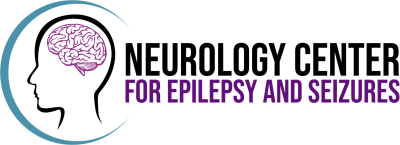If you have seizures or are the parent of a child who has seizures, then…

Post Covid EEG Monitoring
One of the most puzzling things about COVID-19 is that it can impact people in so many different ways. At initial onset, COVID-19 symptoms can range from non-existent to lethal. Some people only have symptoms for a few days, while others have them for much longer. In fact, some people develop something we refer to as long-COVID so we recommend a post COVID EEG monitoring.
What is long COVID?
Long COVID, which may also be called post-COVID conditions, is a catch-all phrase that we use to describe a variety of health problems that people may experience after a COVID infection. To qualify as long COVID, these symptoms need to persist or onset more than four weeks after a person is first infected with COVID.
Doctors see three subcategories of long COVID. First, there are people who do not seem to ever recover from the direct effects of the virus. They just have an extended period of time with the initial symptoms of their COVID infection. A second group of people has what we consider secondary effects of COVID that are due to chronic hospitalization for the disease. These effects include muscle weakness, cognitive dysfunction, depression, and other symptoms. A third group of people has new symptoms appear after apparent recovery.
What are the symptoms of long COVID?
Not surprisingly, the symptoms of long COVID vary from person to person. That is because COVID targets every organ system. If you have a pre-existing condition, it can exacerbate those conditions. Some common symptoms of long COVID include
- Fatigue
- Headaches
- Brain Fog
- Loss of Taste and Smell
- Insomnia
- Depression
- Tachycardia
- Bradycardia
- Shortness of Breath
- Kidney Injuries
- Gastrointestinal Symptoms
How likely am I to get long COVID?
Every variant brings new possibilities. Our current estimates are that 10% to 30% of patients with COVID will develop long COVID.
Can long COVID have neurological impacts?
Absolutely. Some of the most notable impacts of long COVID are neurological and COVID-19 has not been around long enough for us to determine how it will effect long-term brain functioning. Headaches, fatigue, brain fog, confusion, mood disorders, changes in sleep, myalgias, dysautonomia, and sensorimotor deficits are all common neurological manifestations of long-COVID. Even one of the most recognizable COVID symptoms, the loss of taste and smell, is a neurological symptom.
Can EEG monitoring help with post COVID-19 neurological symptoms?
Electroencephalograms (EEGs) are an important part of COVID monitoring, especially for those who are experiencing neurological symptoms following COVID-19. EEGs are more effective at identifying COVID-19 related damage to the brain than CT scans or MRIs.
Identifying changes can help your medical team manage your treatment. While there is no “cure” for COVID-19 or for long COVID symptoms, there are several treatments that can help with the neurological symptoms.



